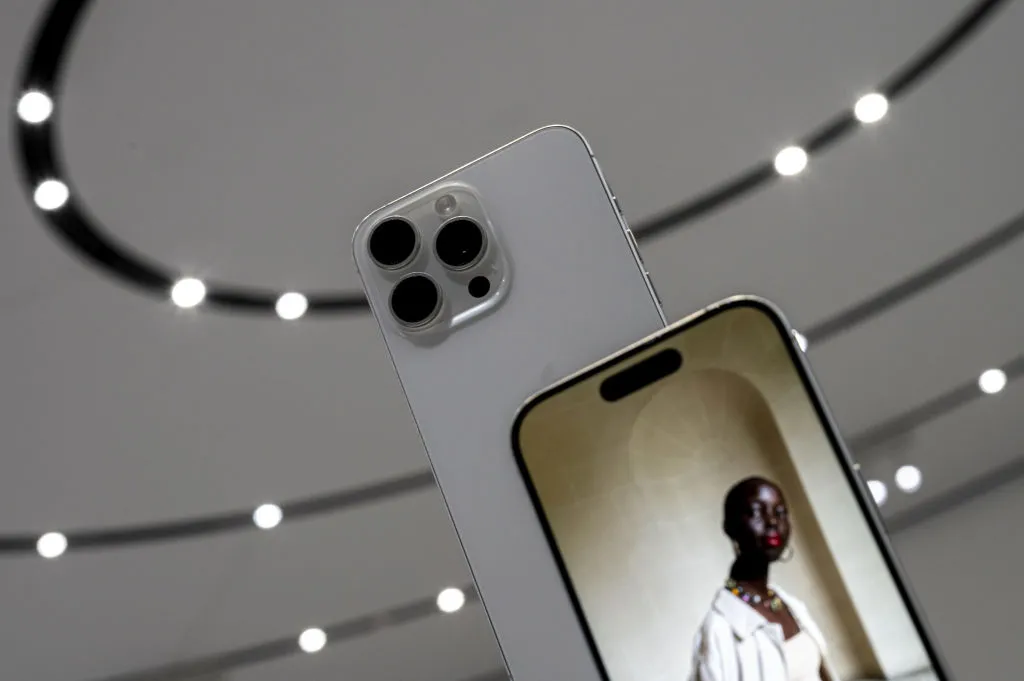Apple’s September event is over. We’ve been bombarded with information, stats, new devices, colours, and every minute change imaginable. The big news seems to be that there's a new button and and a new cleaning cloth, which the tech press have confirmed will be compatible with multiple devices, phew. So far, so meh. But there does seem to be a big part of the announcement that seems to be underplayed: Apple is getting serious about gaming.
For the longest time, mobile gaming has been the little brother of the gaming world, never fully taken seriously, but always there to play with when you need to. But the latest set of announcements suggests that might be all about to change.
iPhone 15: The key upgrades
The new iPhone 15 line-up has been revealed with the addition of ray-tracing abilities. This, in conjunction with Apple’s super-charged A16 Bionic chip, means the devices will be able to run a list of AAA titles, such as Capcom’s Resident Evil 4 remake or the upcoming Assassin’s Creed Mirage.
For years, Apple has been making smartphones with extremely powerful chipsets which, for the most part, are heavily underutilised. With the average smartphone user barely approaching its limit of power, high-end gaming is the perfect use of one of Apple's biggest selling points.

All Apple was missing was ray tracing – a technique for modelling light transport in rendering algorithms or in other words, a way of mimicking the way light works in the real world. For high-end games, this level of rendering is crucial to generate the games in their original form.
This isn’t the first collection of smartphones able to run games like these. For years now, through the advent of cloud gaming, a wide range of massive Xbox games have been available on your smartphone via the company’s cloud gaming subscription service.
However, this has relied on a strong internet connection and a hefty amount of data. That’s fine if you’re connected to a strong Wi-Fi connection, but everything falls apart when you’re on the move… which just so happens to be the optimal time for mobile gaming.
Trying to play any AAA game via cloud gaming on the move is a challenge equitable to a marathon, complete with similar levels of frustration as you stare at loading screens and glitchy movements as your phone desperately tries to cling to a signal.
Apple, on the other hand, won’t rely on cloud gaming, able to run these high-performance games on the move – finally allowing gamers to feel the full frustration of a difficult game on a cramped boiling train… you know, the way they were meant to be played.
Of course, while iPhones will be able to play these games, it doesn’t mean it will be the most optimal experience, especially when controls come into question. Luckily, there is a fix for that of sorts.
Companies like Razer or Backbone have been making mobile gaming peripherals for years now. Attaching to a mobile phone, these devices turn smartphones into full gaming devices similar to a Nintendo Switch, Steam Deck, or the old-school Sony PSPs.
This isn’t Apple’s first venture into the world of gaming. Back in 2019, Apple launched its Arcade subscription service – a mobile gaming subscription service. It was a way of offering up more advanced mobile gaming, but this was still very much limited to the realms of mobile ability with simplistic games and low-end graphical intensities.
It's yet unclear how these recent iPhone 15 boasts will actually be delivered in the real world – so far, Apple has only offered an early look at the iPhone 15
However, if successful, Apple could be the first of the smartphone brands to offer mobile gaming to rival both consoles and computer gaming.
It could also see a major re-think for handheld gaming products like the Nintendo Switch or Steam Deck as we opt to squint at the details of Assassin’s Creed on an iPhone screen.
Read more:
